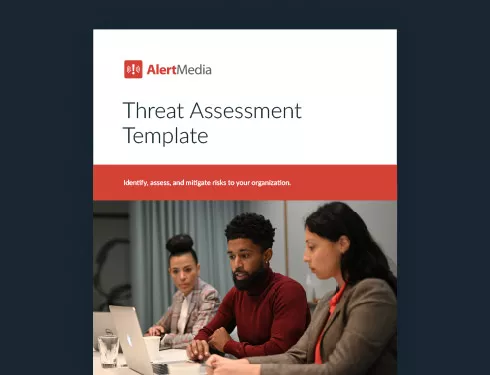
Develop a Facilities Management Checklist in 5 Parts
Facilities management is responsible for almost everything behind the scenes of an organization. Learn how to ensure complete coverage of those tasks with a facilities management checklist.

Facilities management is a wide-reaching branch of business safety and security. The title itself might invoke ideas of restocking office supplies and welcoming visitors, but there’s far more that goes into maintaining a facility that functions well and keeps people safe.
The COVID-19 pandemic made facilities managers’ roles more visible. When employers and employees were struggling to find a way to continue business while staying safe from a little-understood virus, much of the responsibility for actually making all of that happen fell on the facilities team. Of course, facilities managers and their teams were always in charge of a wide range of tasks, but the pandemic drew safety management to the forefront. Arranging socially distanced work, including remote and hybrid setups, and managing hygiene usually fell under the purview of these teams.
With this realization came the recognition that the tasks delegated to the facilities team are vital, varied, and crucial to any organization’s safety, health, success, and upkeep. That upkeep requires a regular cadence of complicated inspections, maintenance, and services that can be a lot to keep track of, even for smaller organizations. That’s why we are exploring the value of a facilities management checklist to help facility managers organize and cover all maintenance plans.
Download Our Threat Assessment Template
What Is a Facilities Management Checklist?
A facilities management checklist, AKA a facilities maintenance checklist (or building maintenance checklist, inspection checklist, or preventive maintenance checklist), is just what it sounds like: a checklist that tracks the recurring duties for which the facilities team is responsible. It shouldn’t include work orders—that is, stuff that’s requested of you on-the-fly. It usually details the tasks that require doing, who needs to complete them, and how often they need to be done. These checklists are usually broken up into subsections, such as interior, exterior, plumbing, walkways, etc., to streamline the process. They are sometimes formatted as spreadsheets to capture data, including who’s responsible for tasks, expected completion dates, and notes on recent events.
It’s important to remember that no facilities management checklist template will work for every facility. A facility’s size, layout, location, and activities will all impact its management needs, but some common tasks will apply to most businesses, such as access control.
What are the benefits of a facilities management checklist?
Regular maintenance inspection tasks are easy to forget about when compared to the urgent issues that come up day-to-day, but that doesn’t mean they’re unimportant. In fact, many of them are very crucial, which necessitate a checklist as a regimented reminder of everything that must be done. For many organizations, this list is too long to forego documentation, and the lists tend to get longer year by year.
In addition to their reliability, facilities management checklists lead to better maintenance overall, which was found by a recent Jones Lang LaSalle study to help your bottom line. The results found that preventative maintenance has an ROI of up to 545%, an investment that makes sense for any company.
Parts of a Facilities Management Checklist
Facilities management checklists don’t mean much unless tailored to your facility’s needs. However, these are some of the most common tasks found on many professional checklists, and even if they don’t apply to your facility, they might help you identify your facility management priorities.
A note on organization
Some tasks straddle the line between categories. It’s not as important to determine the “correct” category for each task as it is to make sure the task is a listed responsibility somewhere. Also, the frequencies listed here are baseline suggestions, and many can benefit from a higher frequency than the minimum.
Safety
If you know AlertMedia, you know we’re big on safety, so we’re putting this one first. Here are some tasks that facility managers should take care of:
- Conduct a safety inspection of structural components of the building and determine the need for repairs
Frequency: Semi-annually (and after major events like earthquakes or hurricanes)
- Ensure proper function of lockout-tagout mechanisms for equipment, including hazardous energy or moving parts
Frequency: Annually
- Test fire safety notifications, including fire alarm systems and smoke detectors
Frequency: Semi-annually
- Inspect fire equipment, including sprinkler systems and fire extinguishers
Frequency: Annually
- Confirm that caution areas are clearly marked with bright tape and signage
Frequency: Semi-annually
- Test carbon monoxide detectors
Frequency: Monthly
- Test security system alarm
Frequency: Monthly
HVAC
A common source of office bickering, the HVAC system provides comfort and safe air for its occupants. Here are some of its maintenance needs so no one needs to be concerned beyond the thermostat setting:
- Replace air filters on HVAC units
Frequency: Monthly
- Check drainage lines for clogs
Frequency: Annually
- Test cooling system
Frequency: Before hot seasons
- Check heating system
Frequency: Before cold seasons
- Check thermostats for function
Frequency: Annually
- Inspect coolant coils and refrigerant charge levels
Frequency: Annually
- Check for adequate airflow
Frequency: Semi-annually
- Check doors and windows for leaks
Frequency: Semi-annually
Walkways and doors
The common paths people take to, from, and within their workplace can cause frustration, confusion, or even injuries if not properly cared for. They also encompass an important part of target hardening your workplace. Here’s what we find most facility managers to be concerned with:
- Ensure doors open, close, and lock smoothly and easily
Frequency: Weekly
- Check for obstructions or misplaced items/furniture that might block a door or walkway
Frequency: Daily
- Check for slipping hazards, including water, ice, or other spills, and clean them up or make them safe until clear
Frequency: Daily
- Ensure handrails are sturdy and in good condition
Frequency: Weekly
- Test access control measures, including keycards and badges
Frequency: Monthly
- Inspect elevators for function, safety, and weight tolerance
Frequency: Annually
- Ensure that emergency exits are clearly marked
Frequency: Semi-annually
Location specifics
Some of these items aren’t going to apply everywhere because of local climates. You shouldn’t worry too much about regularly shoveling the walkways if you’re in Los Angeles, just as you wouldn’t take precautions for a hurricane in Montana. Keep that in mind when reviewing these and building your own checklist.
Building exterior
The space around your facility is just as important as what’s inside. These areas can provide comfort, relaxation, and safety to those inside and around your workplace, so it’s vital to keep up with the unique challenges of the great outdoors.
- Ensure proper landscaping
Frequency: Monthly
- Check parking lot conditions, including potholes, dim areas, and weathered paint
Frequency: Semi-annually
- Trim back trees and plants that encroach on walkways, infrastructure, or driveways
Frequency: Annually
- Clear fallen leaves, branches, and other debris
Frequency: Bi-monthly
- Check the condition of the roof and gutters
Frequency: Annually (and after high-wind events)
- Inspect structures for signs of water damage
Frequency: Annually
- Check paint and siding
Frequency: Annually
- Check that there is sufficient “defensible space” around your buildings, an important part of wildfire preparedness
Frequency: Bi-Monthly
Power and communications
Most businesses would be completely out of commission if the power, internet, or phone lines went down for an extended period. Regular maintenance might not eliminate all chances for outages, but they can definitely lower the chance.
- Test all lighting, and ensure an adequate supply of replacement light bulbs
Frequency: Monthly
- Inspect exterior power delivery lines for encroaching tree branches or debris
Frequency: Monthly
- Test surge protection equipment
Frequency: Annually
- Review energy consumption rates
Frequency: Seasonally
- Check wiring for signs of damage or corrosion
Frequency: Semi-annually
- Test communication systems, including PA and emergency notification software
Frequency: Semi-annually
- Ensure proper connectivity for wired phones
Frequency: Semi-annually
Check(list) Yourself Before You Wreck Yourself
Running an effective maintenance program means keeping a lot of plates spinning at once. Missing anything can significantly affect the rest of your organization and its employees. It takes an organized, scalable process flow to keep maintenance operations healthy. This also means that tasks can be handed off seamlessly if the primary facility manager is indisposed for some reason, and it means that threats or increasing assets don’t disrupt the normal cadence. A personalized checklist is key to ensuring that every duty is completed on time so that you’ll spend less time scrambling to keep up and more time preparing for the future.




